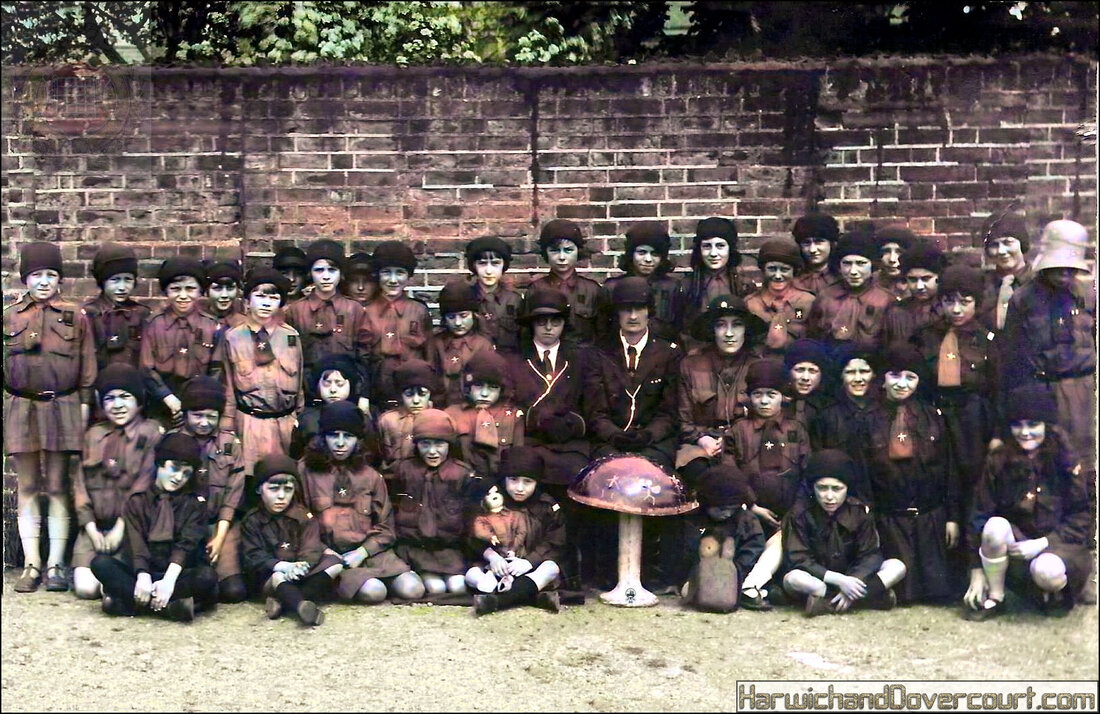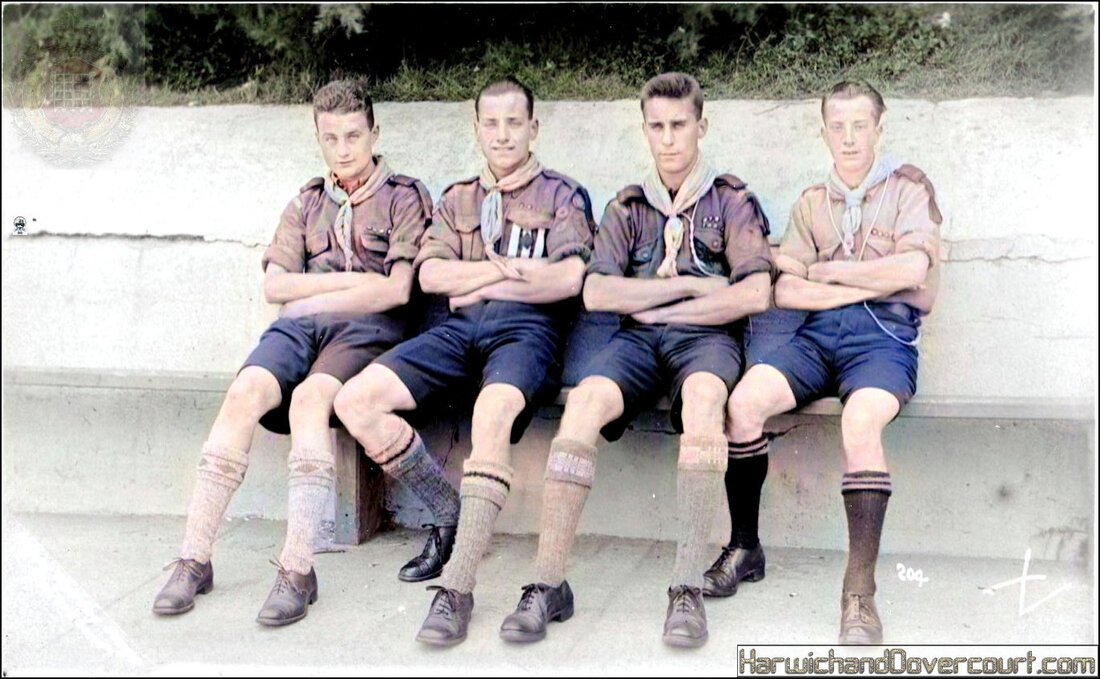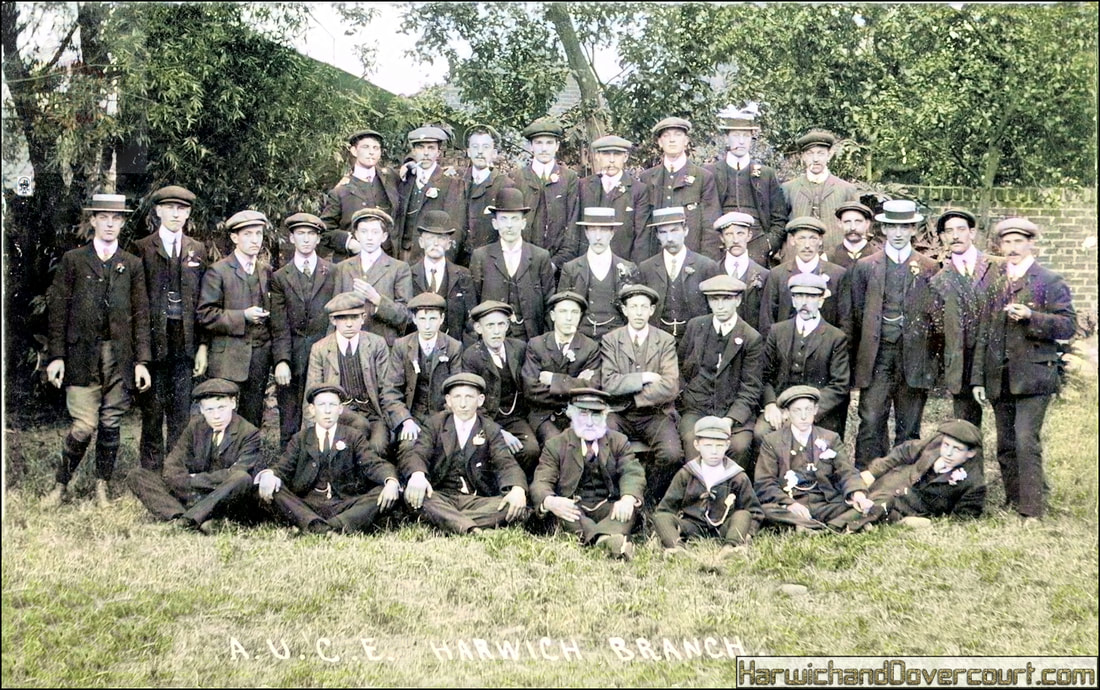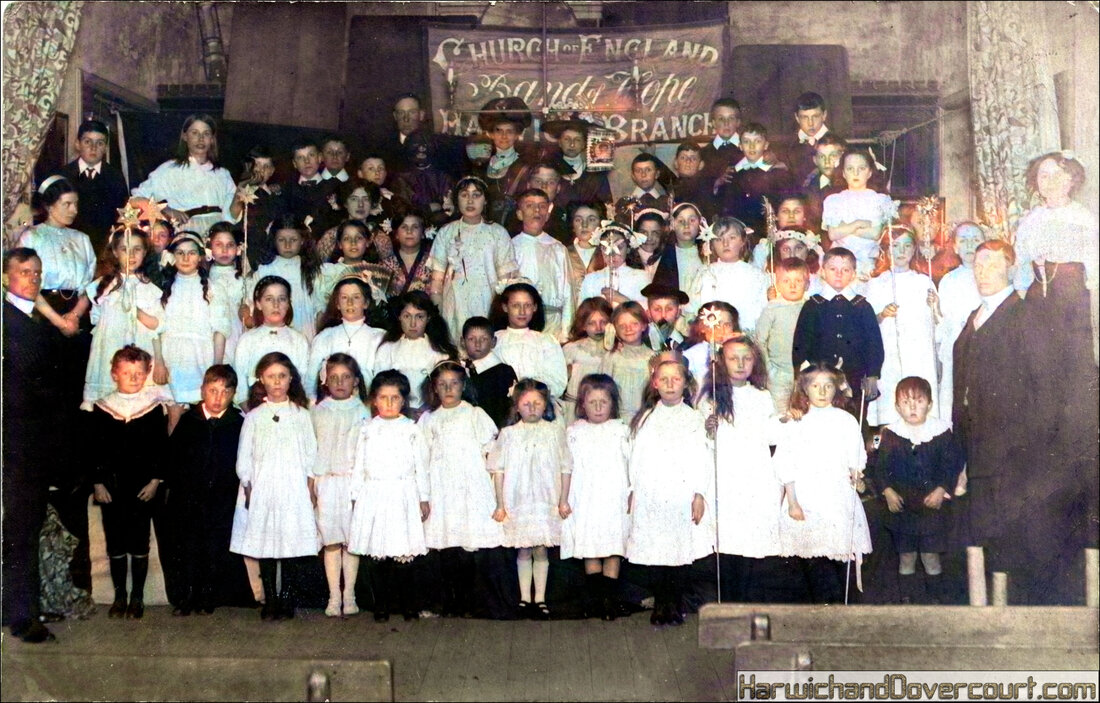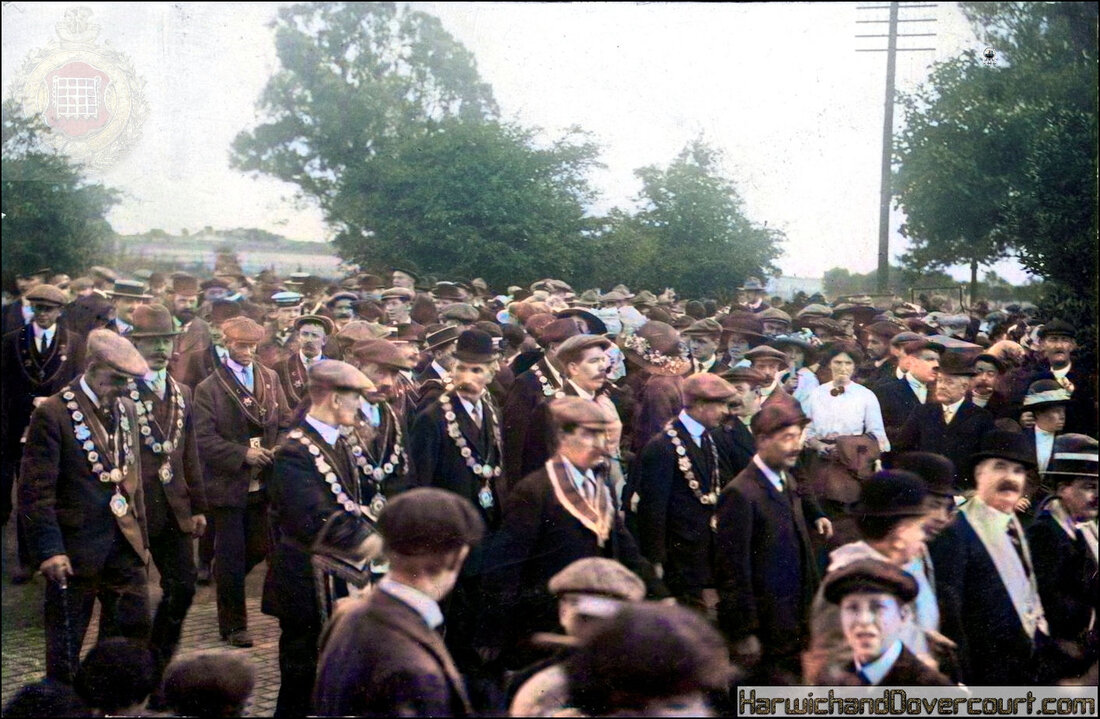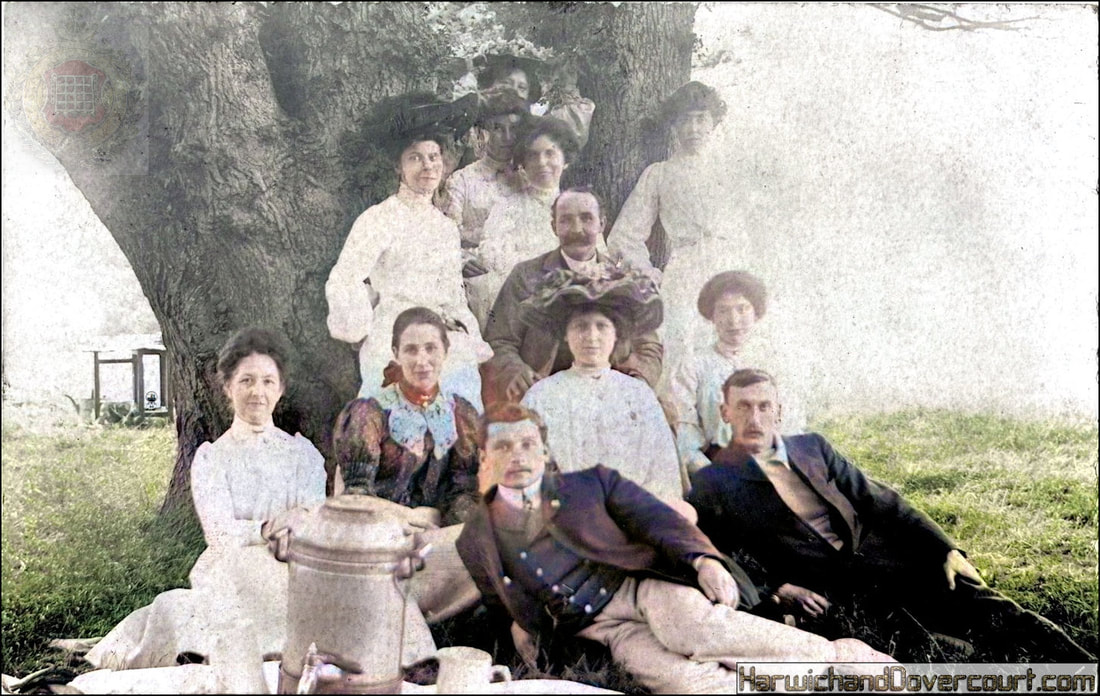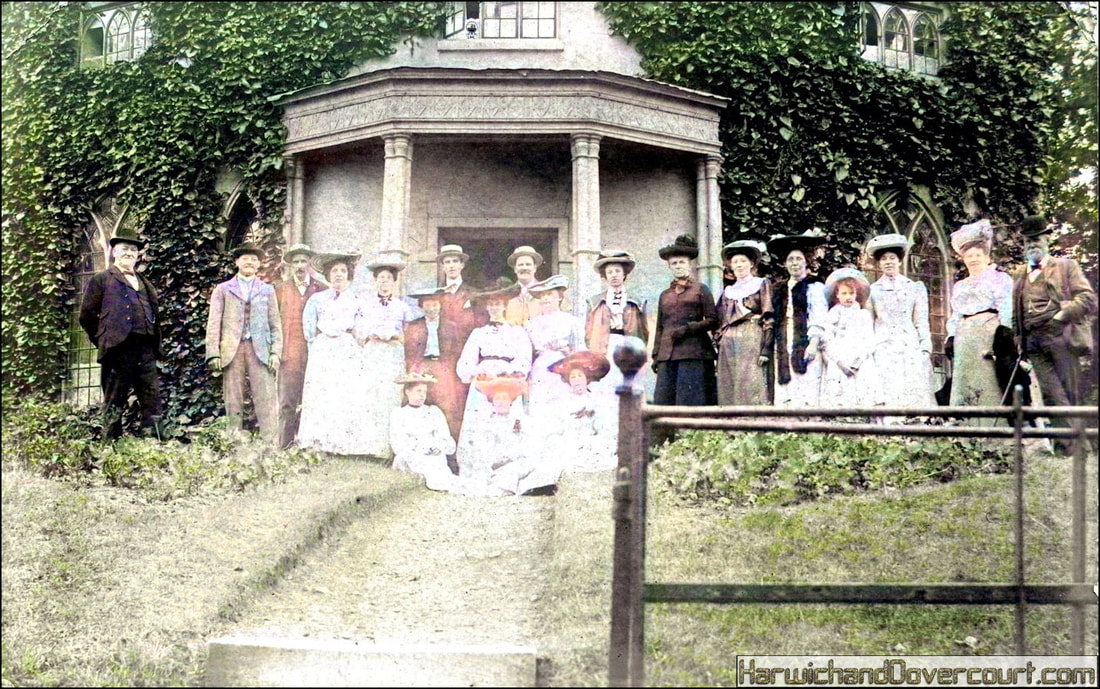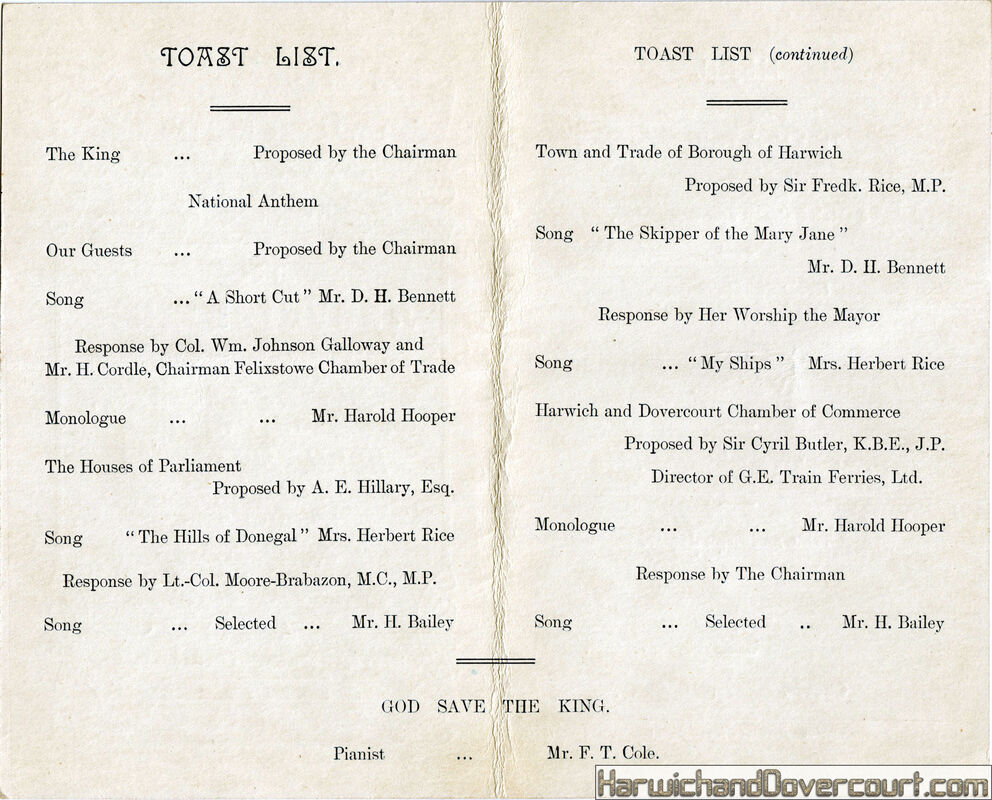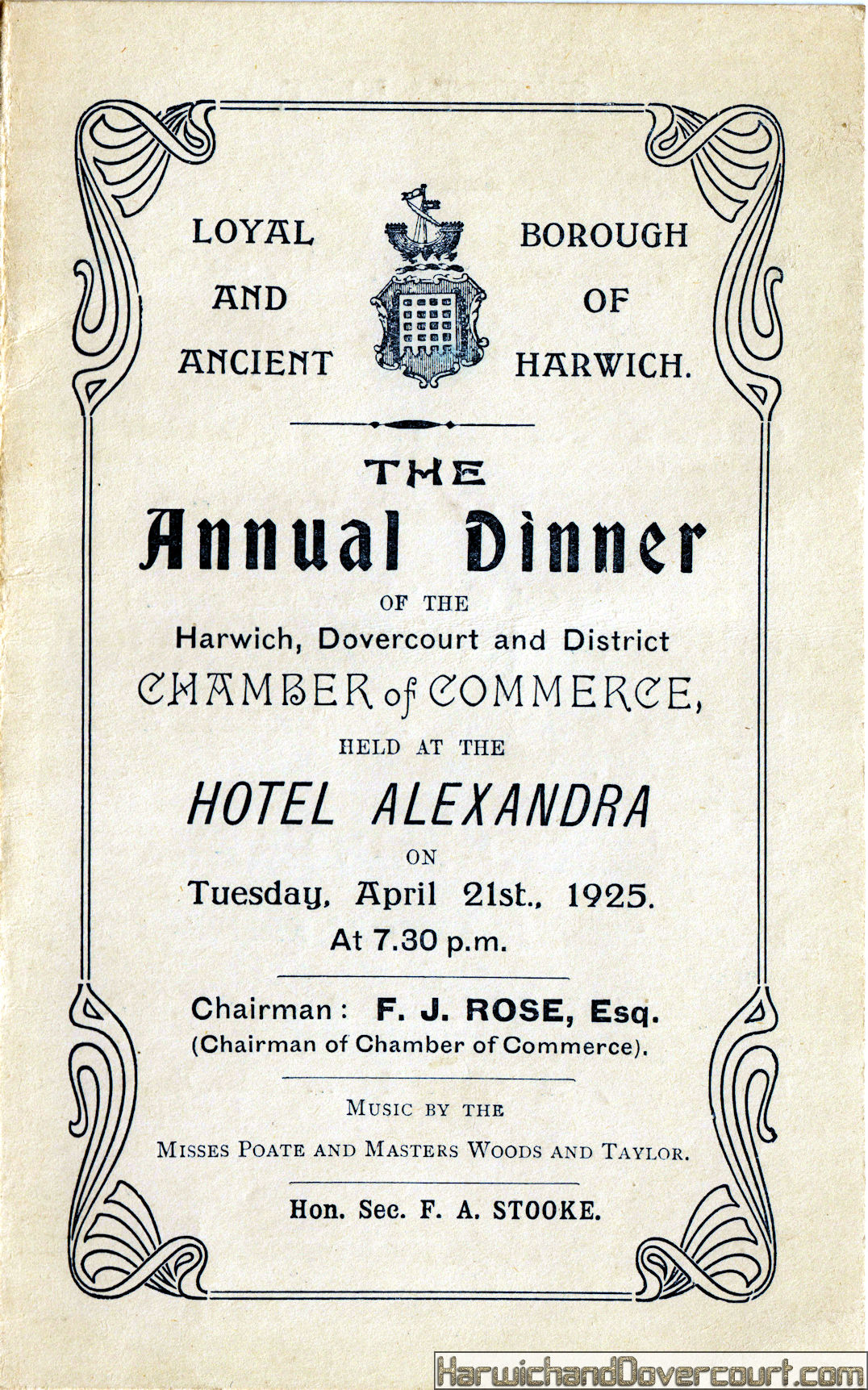Local Organisations in the Harwich & Dovercourt Area
1st Harwich Brownie Pack (1930) H&D FW
Dovercourt Bay Scouts (1931) Happy Holiday Snaps H&D FW
~ Amalgamated Union of Co-operative Employees, Harwich Branch (1910) H&D ~
~ Church of England ~ Harwich "Band of Hope" ~
~ St Nicholas Church Mission Hall, Harwich (1910) H&D ~
T he Harwich "Band of Hope" held its first meeting at the St Nicholas’ Mission Hall in 1910
In 1847, a 72-year-old Irish Presbyterian lady was invited to Leeds to speak at a series of children’s meetings. Ann Jane Carlile was convinced that children suffered because of the ready availability of ‘strong drink’.
Ann met a young Baptist minister called Jabez Tunnicliffe, who had been shaken to the core by his experience of a dying alcoholic. Just before he died, the man had clutched at Tunnicliffe and made him promise to warn children about the dangers of drink.
Ann and Jabez decided to start a regular children’s meeting (a Band of Hope) in Leeds. It isn’t clear who thought of the name, but Ann is supposed to have said, “What a happy band these children make, they are the hope for the future.” The idea for regular children’s meetings spread and in 1855 The United Kingdom Band of Hope Union formed to support the local groups.
Fifty years later, in 1897, the Band of Hope numbered 3.5 million children and adults. Queen Victoria was its Jubilee patron, and it was part of the fabric of Victorian society and the Church.
In 1995, the UK Band of Hope changed its name to Hope UK – inheriting a 150-year tradition of putting children and young people first and encouraging them to ‘live life to the full’.
In 1847, a 72-year-old Irish Presbyterian lady was invited to Leeds to speak at a series of children’s meetings. Ann Jane Carlile was convinced that children suffered because of the ready availability of ‘strong drink’.
Ann met a young Baptist minister called Jabez Tunnicliffe, who had been shaken to the core by his experience of a dying alcoholic. Just before he died, the man had clutched at Tunnicliffe and made him promise to warn children about the dangers of drink.
Ann and Jabez decided to start a regular children’s meeting (a Band of Hope) in Leeds. It isn’t clear who thought of the name, but Ann is supposed to have said, “What a happy band these children make, they are the hope for the future.” The idea for regular children’s meetings spread and in 1855 The United Kingdom Band of Hope Union formed to support the local groups.
Fifty years later, in 1897, the Band of Hope numbered 3.5 million children and adults. Queen Victoria was its Jubilee patron, and it was part of the fabric of Victorian society and the Church.
In 1995, the UK Band of Hope changed its name to Hope UK – inheriting a 150-year tradition of putting children and young people first and encouraging them to ‘live life to the full’.
Harwich Freemasons Procession (1913) H&D FW
~ Wesley Guild Picnic I , Michaelstowe Hall, Ramsey, Essex (1905) Unknown Publisher H&D ~
The Wesley Guild originated as a youth movement aimed at countering secular influence and retaining young people within the Church.
he Guild idea was first suggested by the Wesleyan minister W. B. Fitzgerald and was championed at the Liverpool Conference of 1896 by C. H. Kelly, Book Steward and former Secretary for Sunday School affairs. The Guild as it was approved by the Conference was defined as a "Young People's Society closely linked to the Church, holding weekly or periodical meetings for devotional, literary or social purposes, and centring around various branches of Young People's work".
There were however no age limitations imposed and the Guild gradually acquired a membership which was not particularly youthful.
Fitzgerald served as the first General Secretary of the Guild and by 1909 there was 2,200 local Guilds with 152,000 members. There was then a sharp decrease attributable to the effects of the First World War and an increase in secular attractions. From 1922 however membership again increased, reaching a peak of 174,202 senior and 57,790 junior members in 1934, after which it again declined to a membership of between 25,000 and 50,000 by 1970.
George Allan took over as General Secretary in 1910 and remained in that position for twelve years. He was replaced by Alfred Robinson and in 1943 the Guild became one of the responsibilities of the Methodist Youth Department.
In December 1970 a working party was established to produce a paper on the future of the Guild. The conclusion was a realisation that while the Guild was no longer attractive to young people, it was still very much alive as an organisation for older church members. To the original basic principles of the Guild Charter - the four Cs of comradeship, consecration, culture and Christian service, were added new objectives aimed at making the Guild more adult and modern in outlook.
In 1973 the Methodist Church was restructured and the Guild became part of the Division of Ministries. A National Guild Secretary was appointed and a committee established to deal specifically with Guild matters. These changes helped to revitalize the organisation at a time when its value and relevance was being called into question. The 1980s saw a renewal of Conference Guild Rallies and increasing inter-guild activity. Currently there are just over a thousand guilds nationwide.
The programme of meetings produced by individual guilds cover a broad spectrum of activity from social gatherings to worship.
he Guild idea was first suggested by the Wesleyan minister W. B. Fitzgerald and was championed at the Liverpool Conference of 1896 by C. H. Kelly, Book Steward and former Secretary for Sunday School affairs. The Guild as it was approved by the Conference was defined as a "Young People's Society closely linked to the Church, holding weekly or periodical meetings for devotional, literary or social purposes, and centring around various branches of Young People's work".
There were however no age limitations imposed and the Guild gradually acquired a membership which was not particularly youthful.
Fitzgerald served as the first General Secretary of the Guild and by 1909 there was 2,200 local Guilds with 152,000 members. There was then a sharp decrease attributable to the effects of the First World War and an increase in secular attractions. From 1922 however membership again increased, reaching a peak of 174,202 senior and 57,790 junior members in 1934, after which it again declined to a membership of between 25,000 and 50,000 by 1970.
George Allan took over as General Secretary in 1910 and remained in that position for twelve years. He was replaced by Alfred Robinson and in 1943 the Guild became one of the responsibilities of the Methodist Youth Department.
In December 1970 a working party was established to produce a paper on the future of the Guild. The conclusion was a realisation that while the Guild was no longer attractive to young people, it was still very much alive as an organisation for older church members. To the original basic principles of the Guild Charter - the four Cs of comradeship, consecration, culture and Christian service, were added new objectives aimed at making the Guild more adult and modern in outlook.
In 1973 the Methodist Church was restructured and the Guild became part of the Division of Ministries. A National Guild Secretary was appointed and a committee established to deal specifically with Guild matters. These changes helped to revitalize the organisation at a time when its value and relevance was being called into question. The 1980s saw a renewal of Conference Guild Rallies and increasing inter-guild activity. Currently there are just over a thousand guilds nationwide.
The programme of meetings produced by individual guilds cover a broad spectrum of activity from social gatherings to worship.
